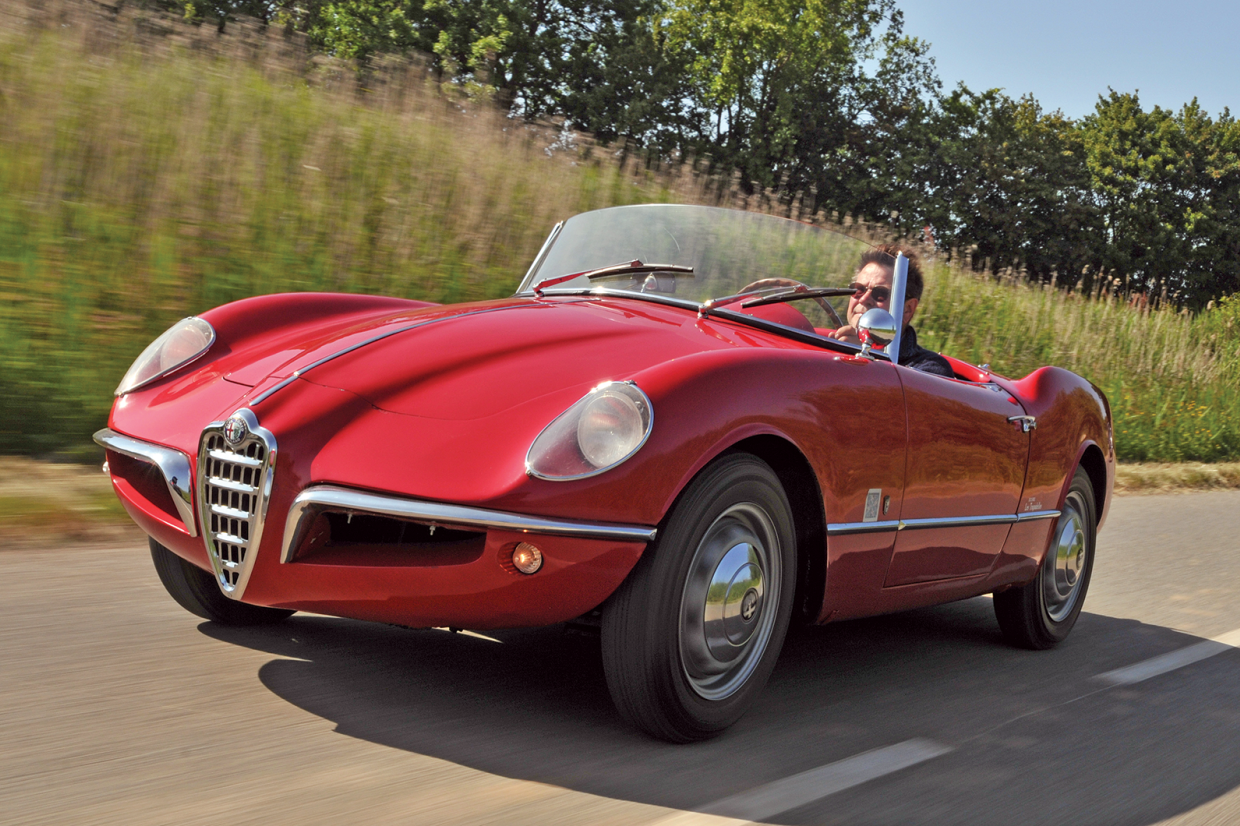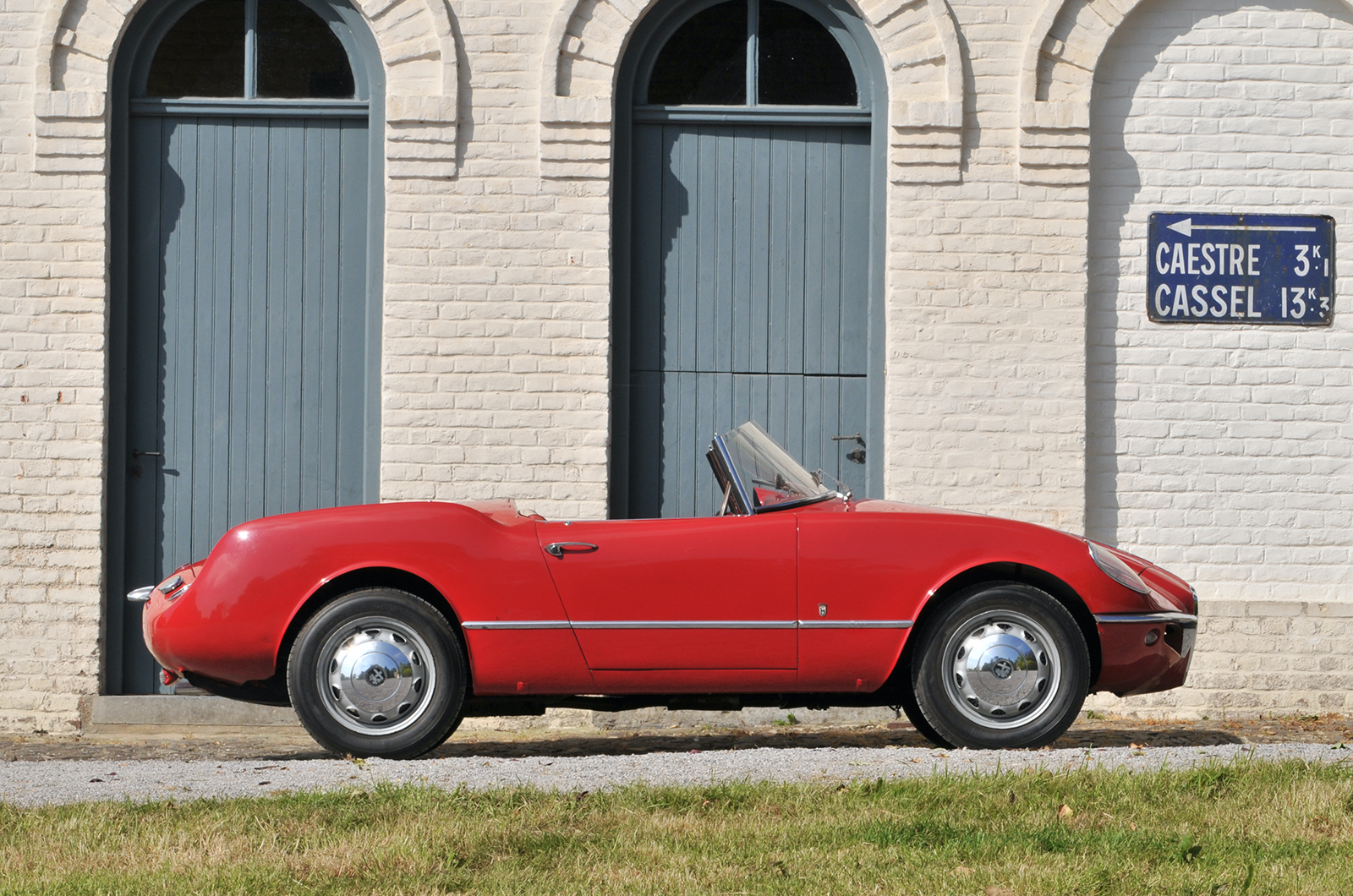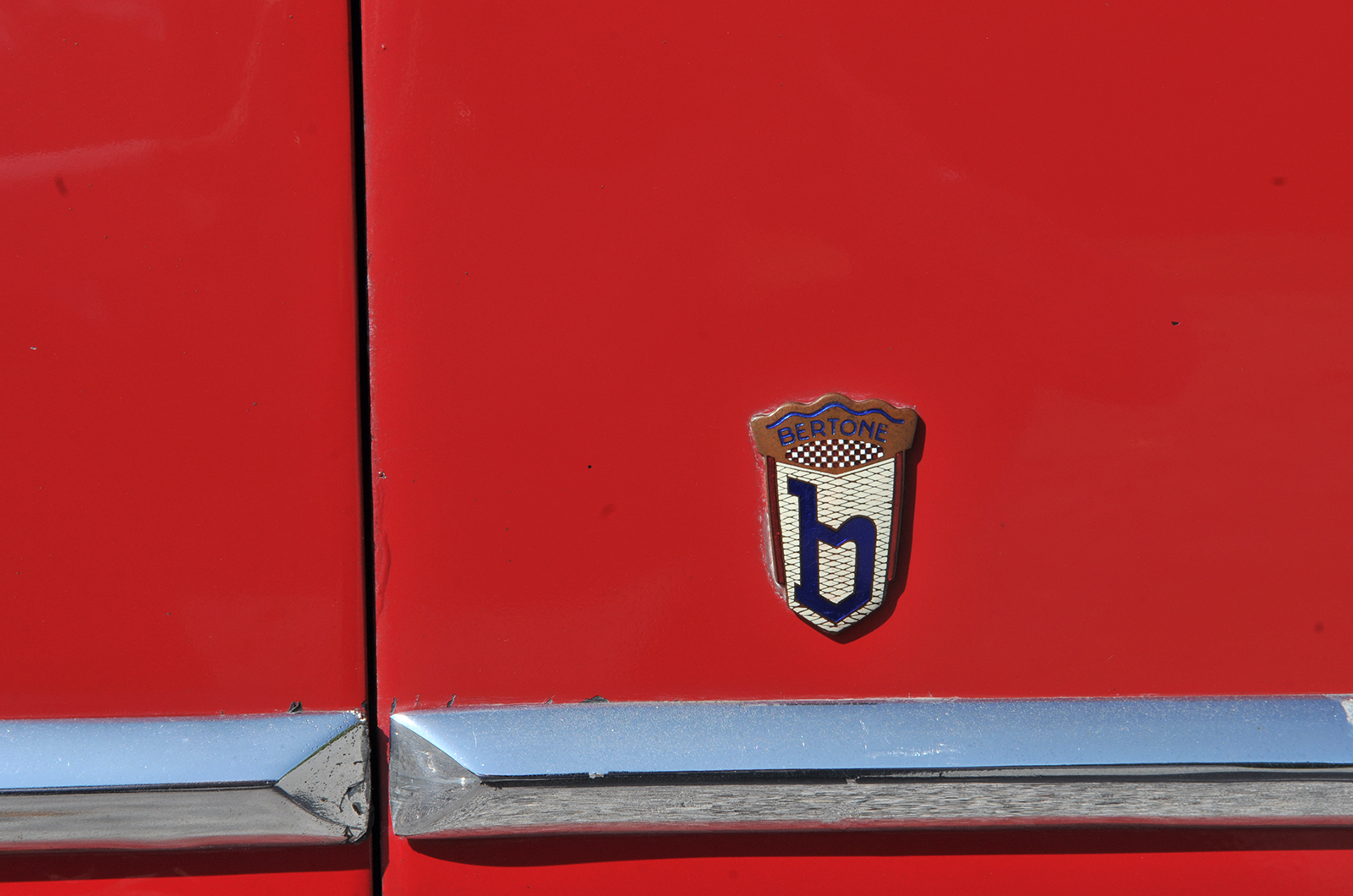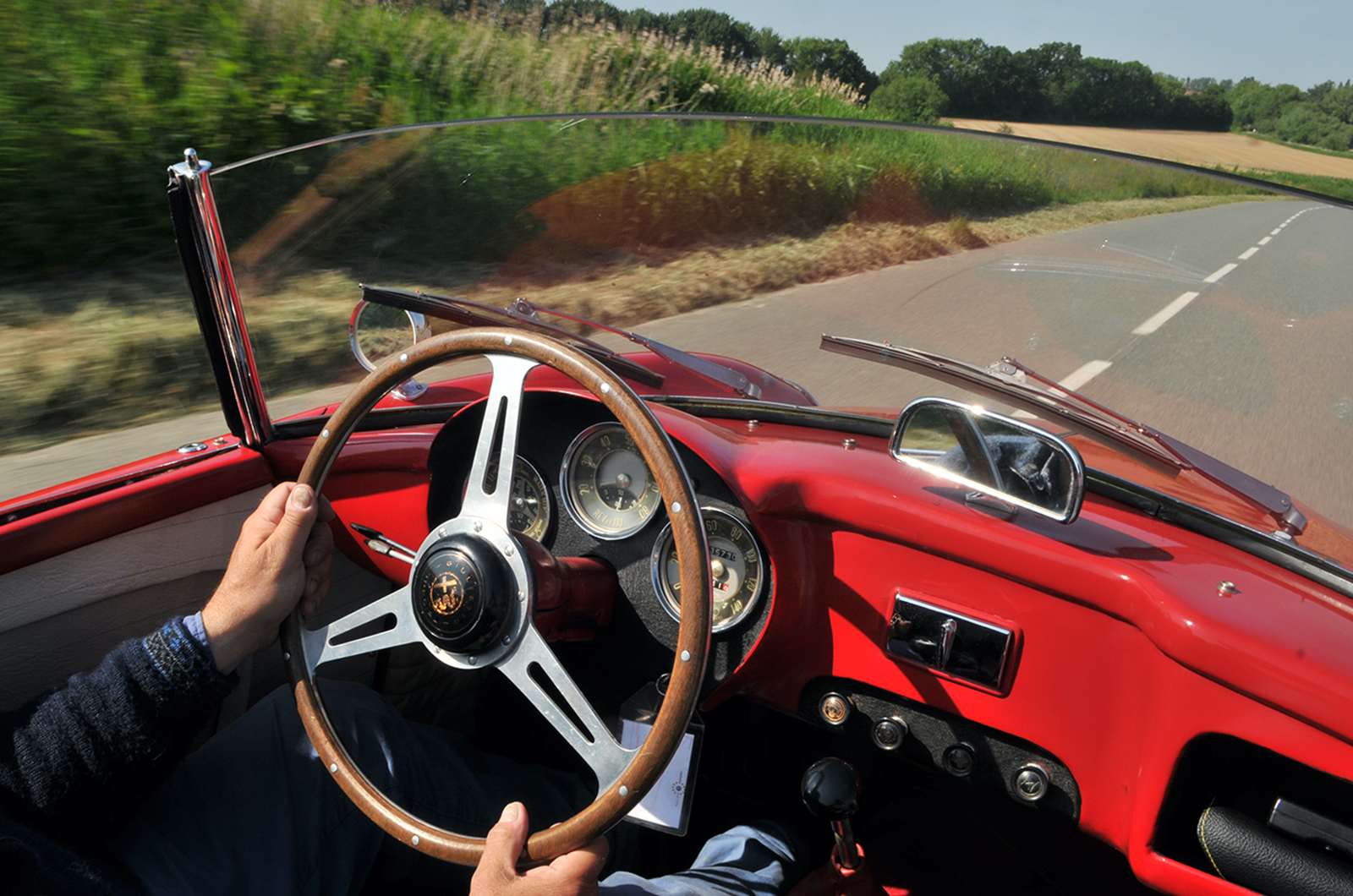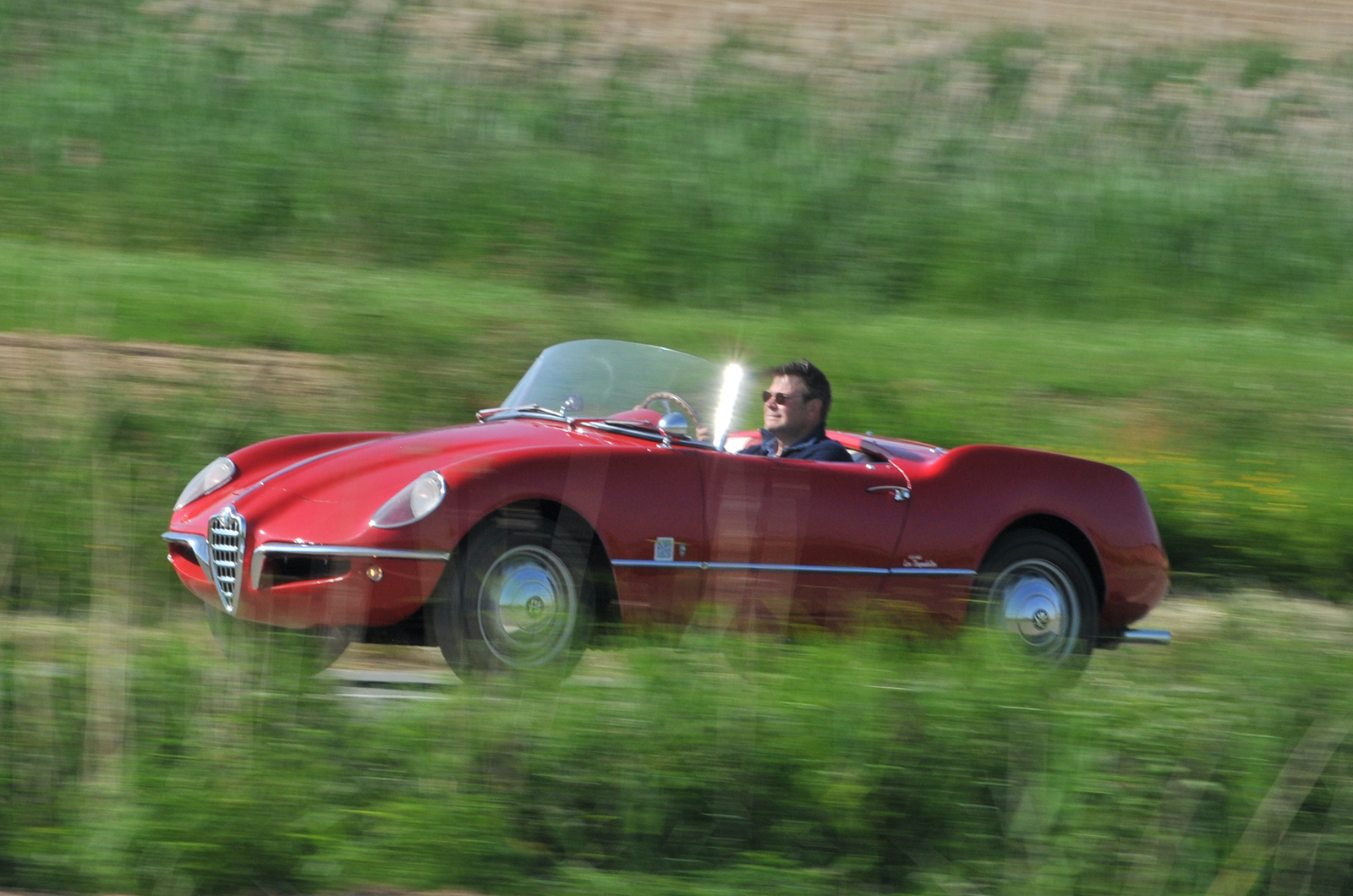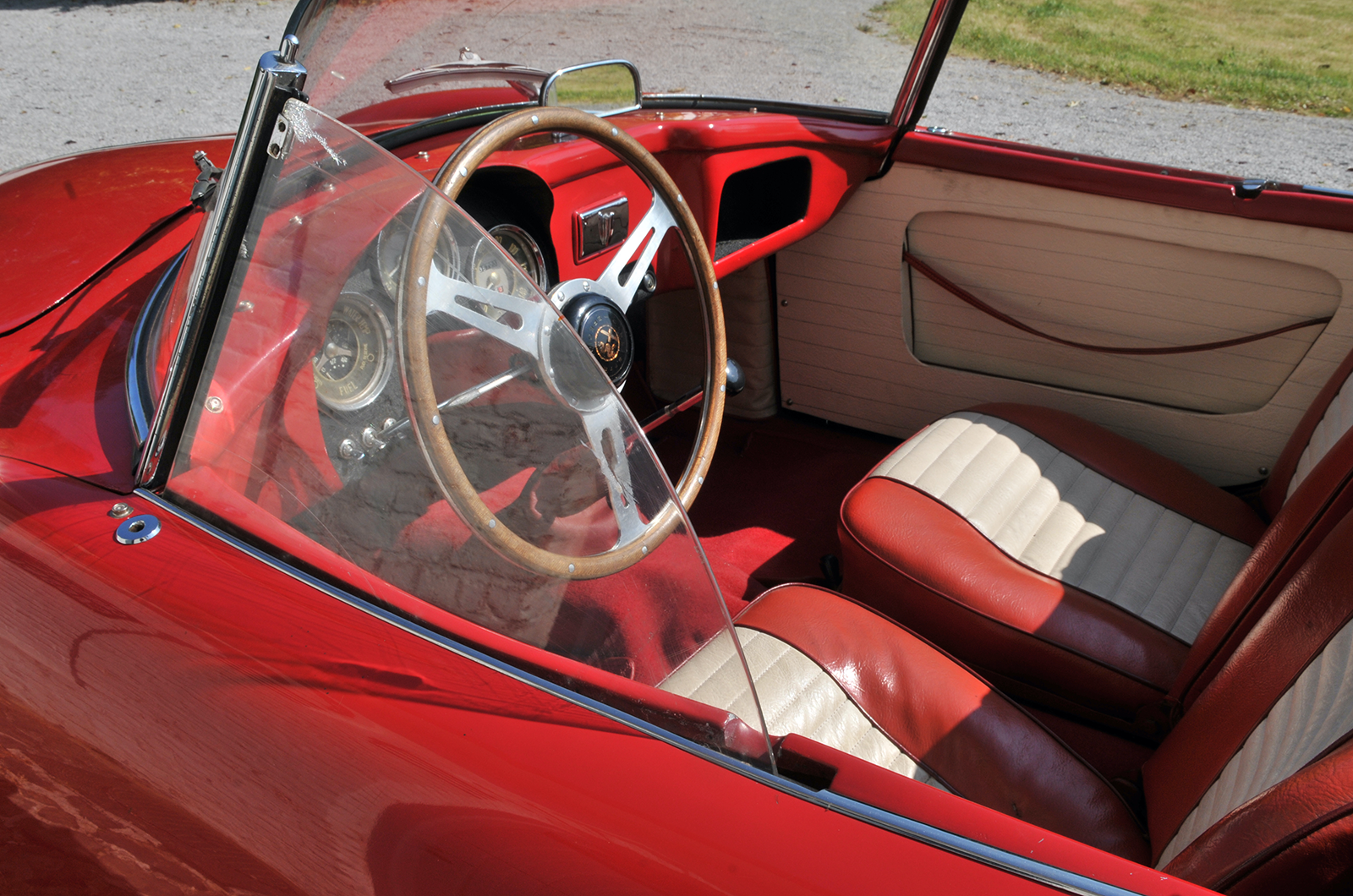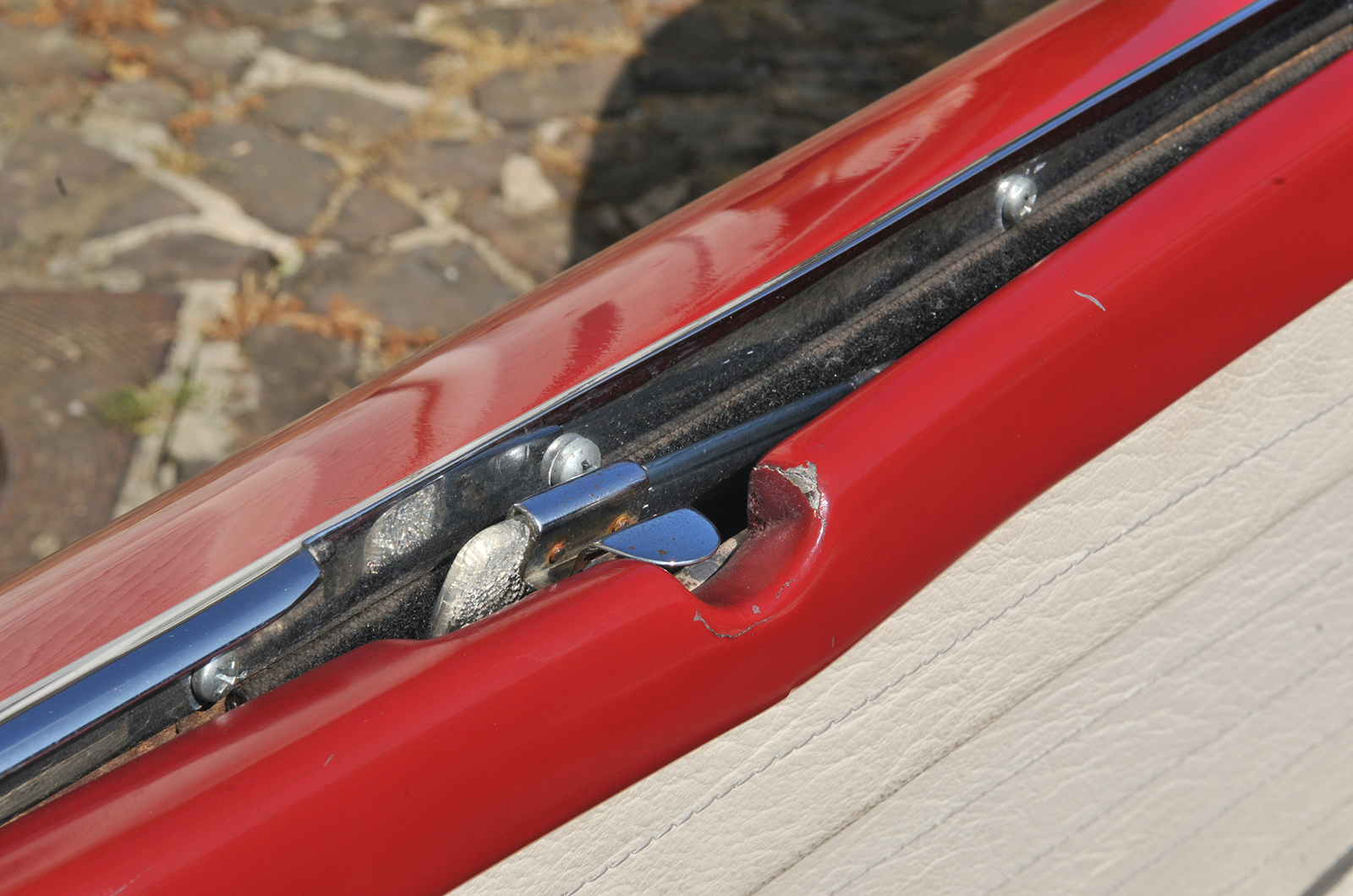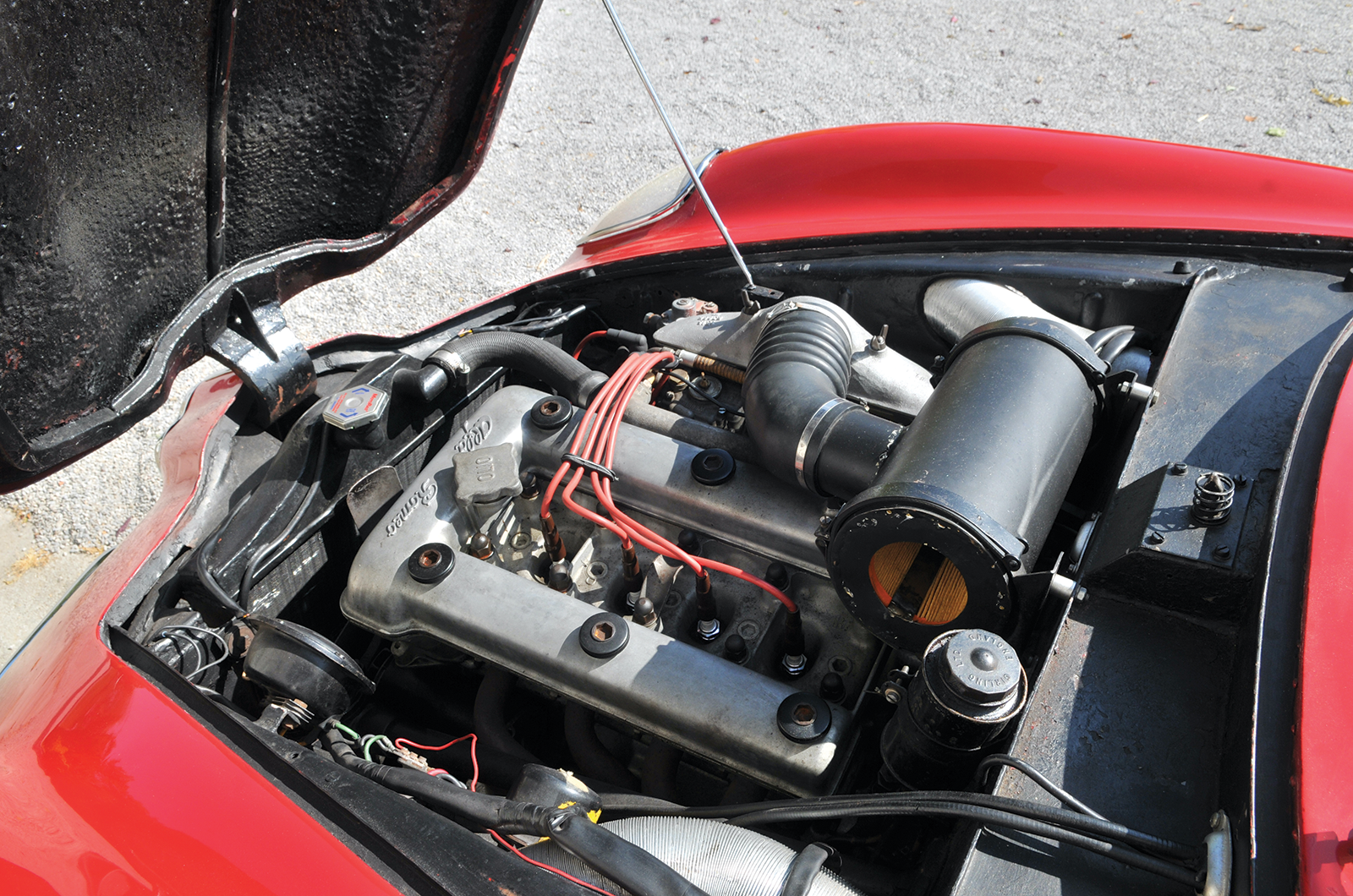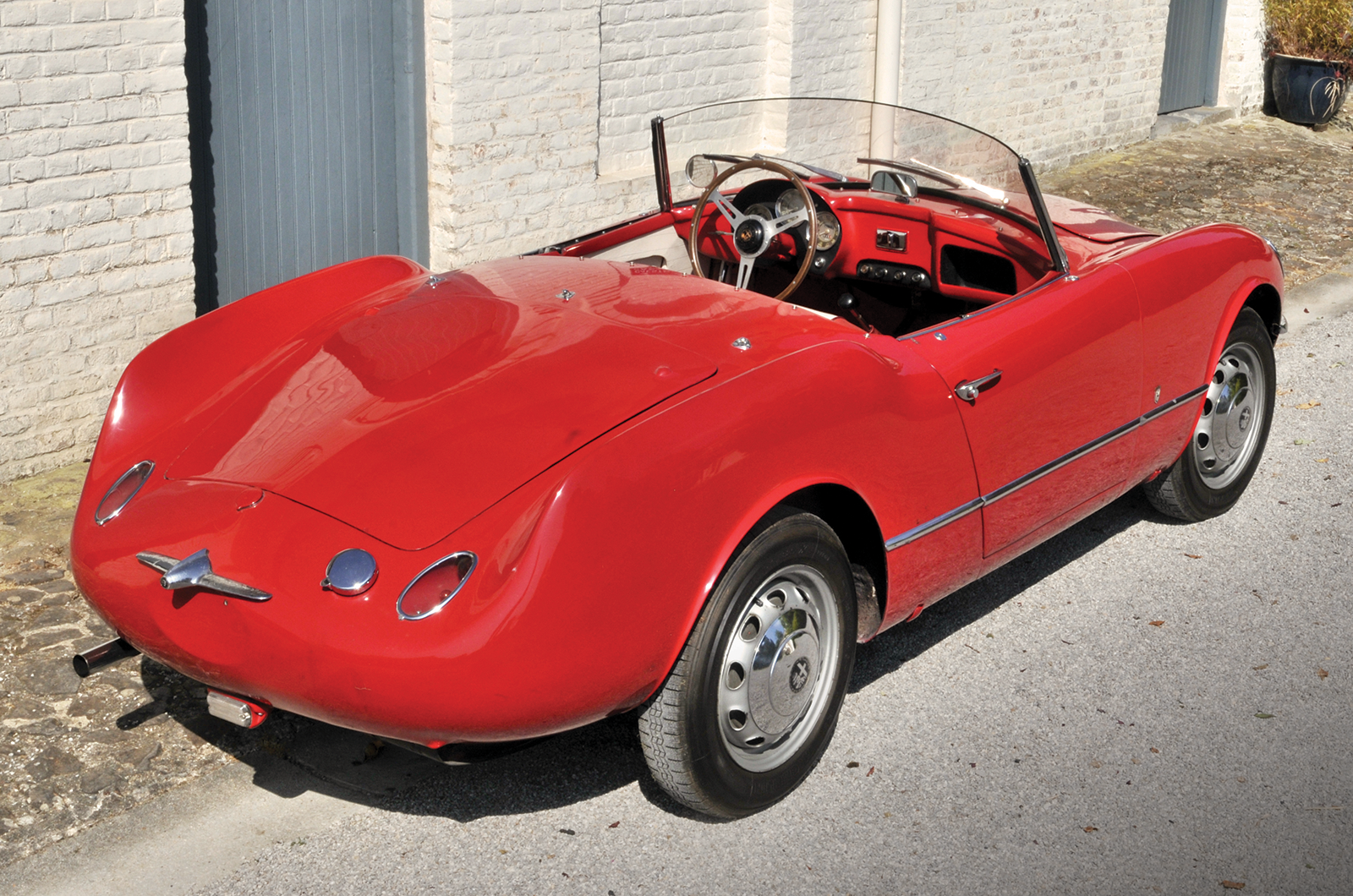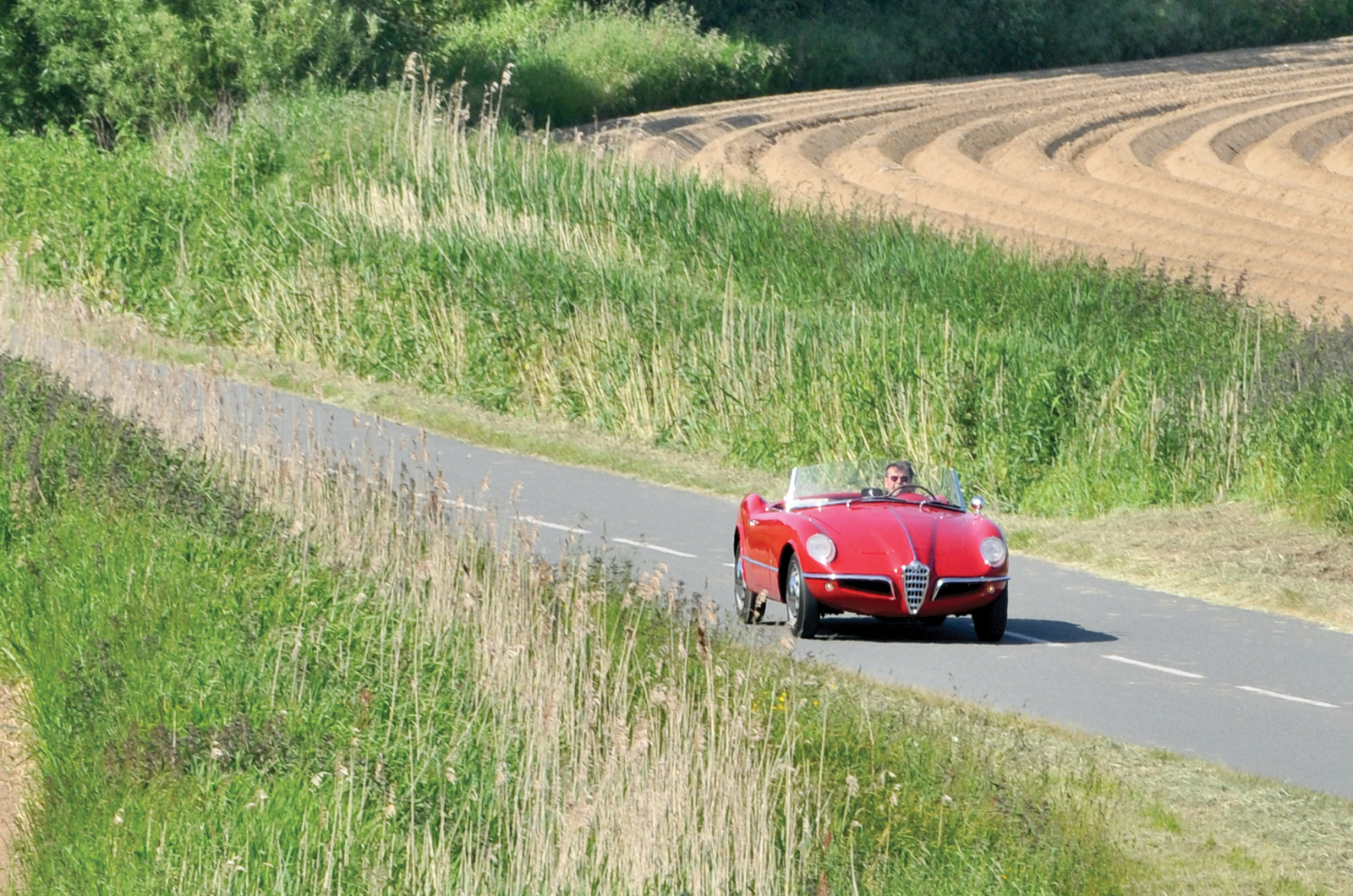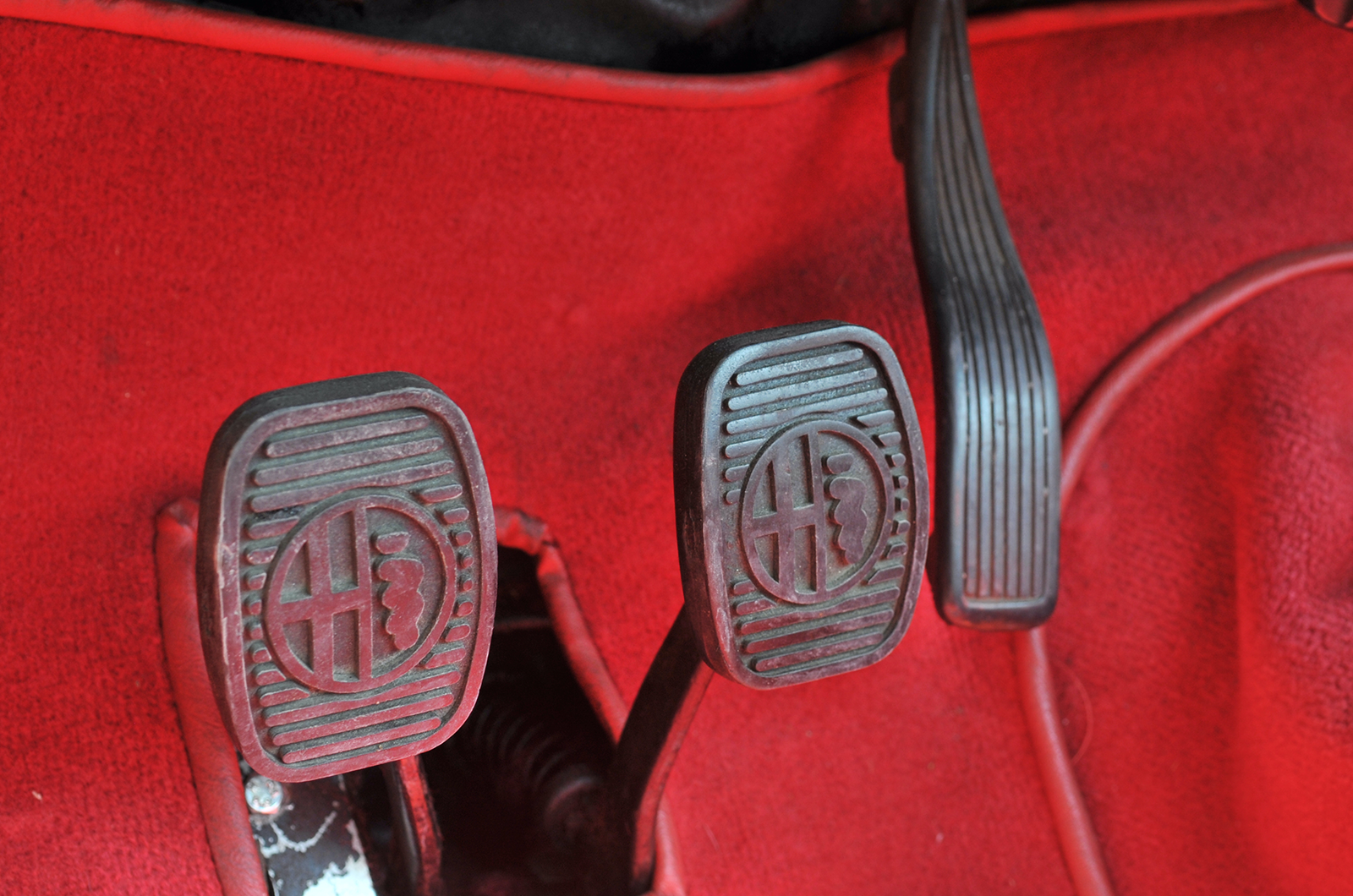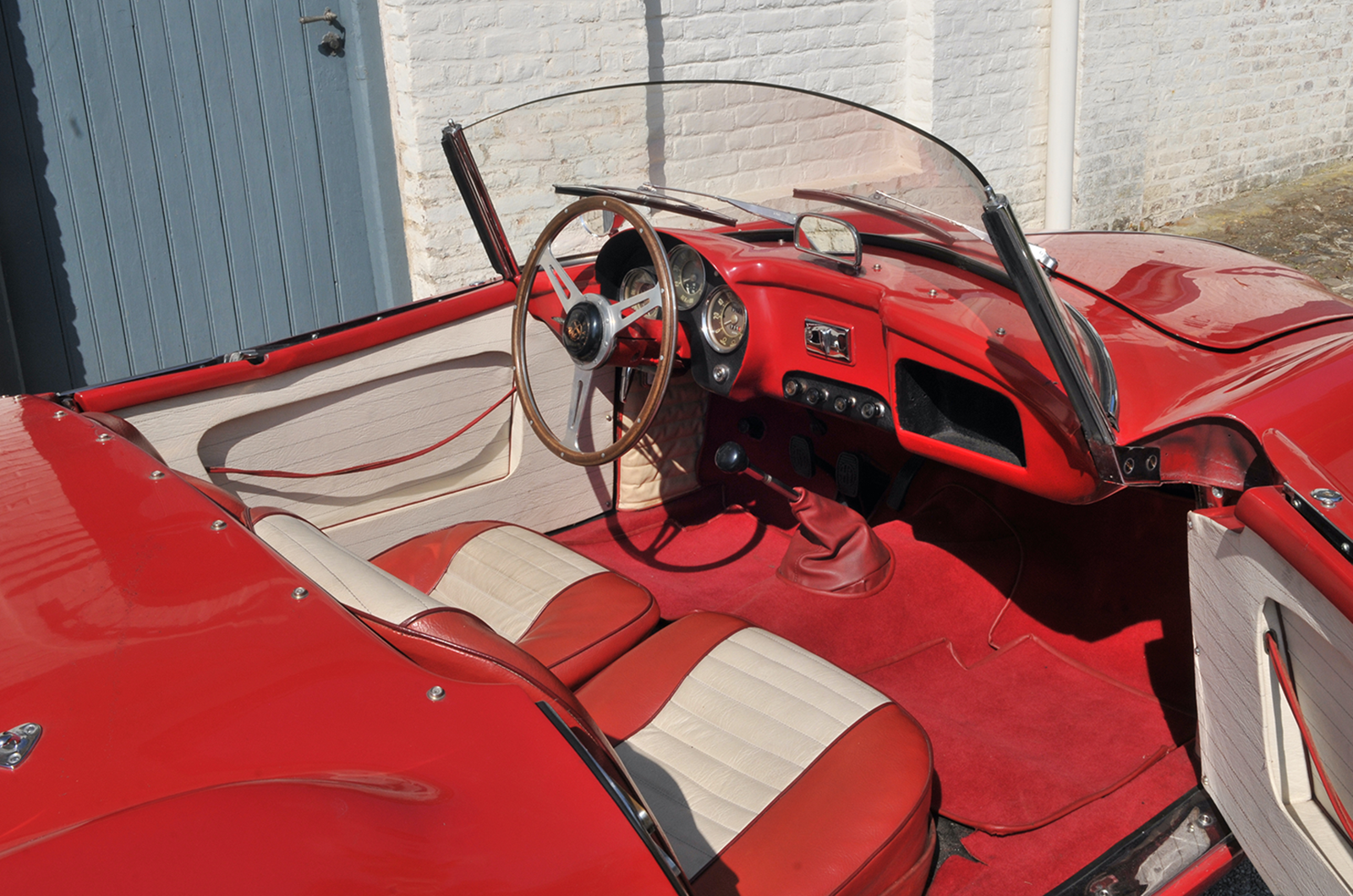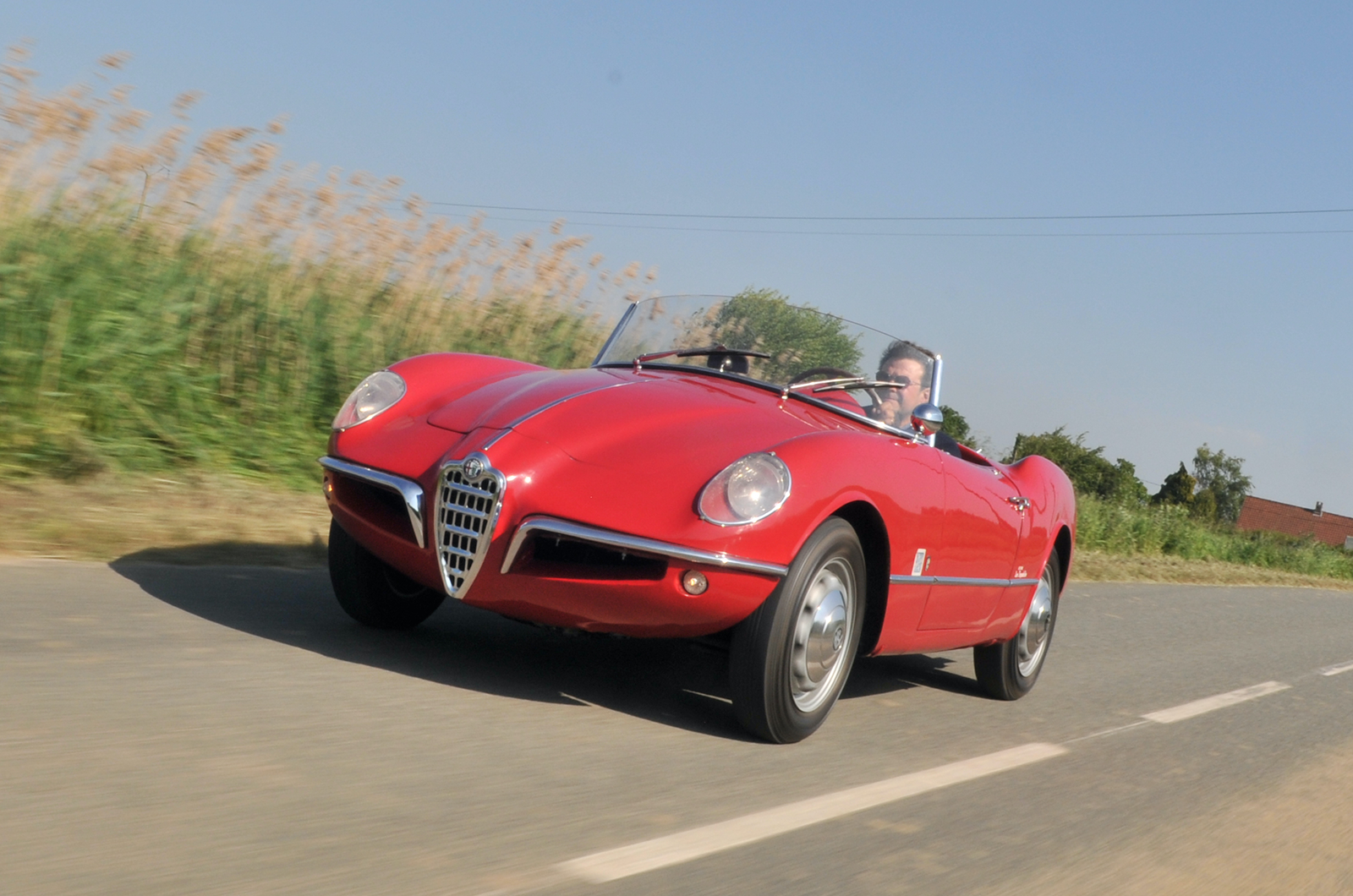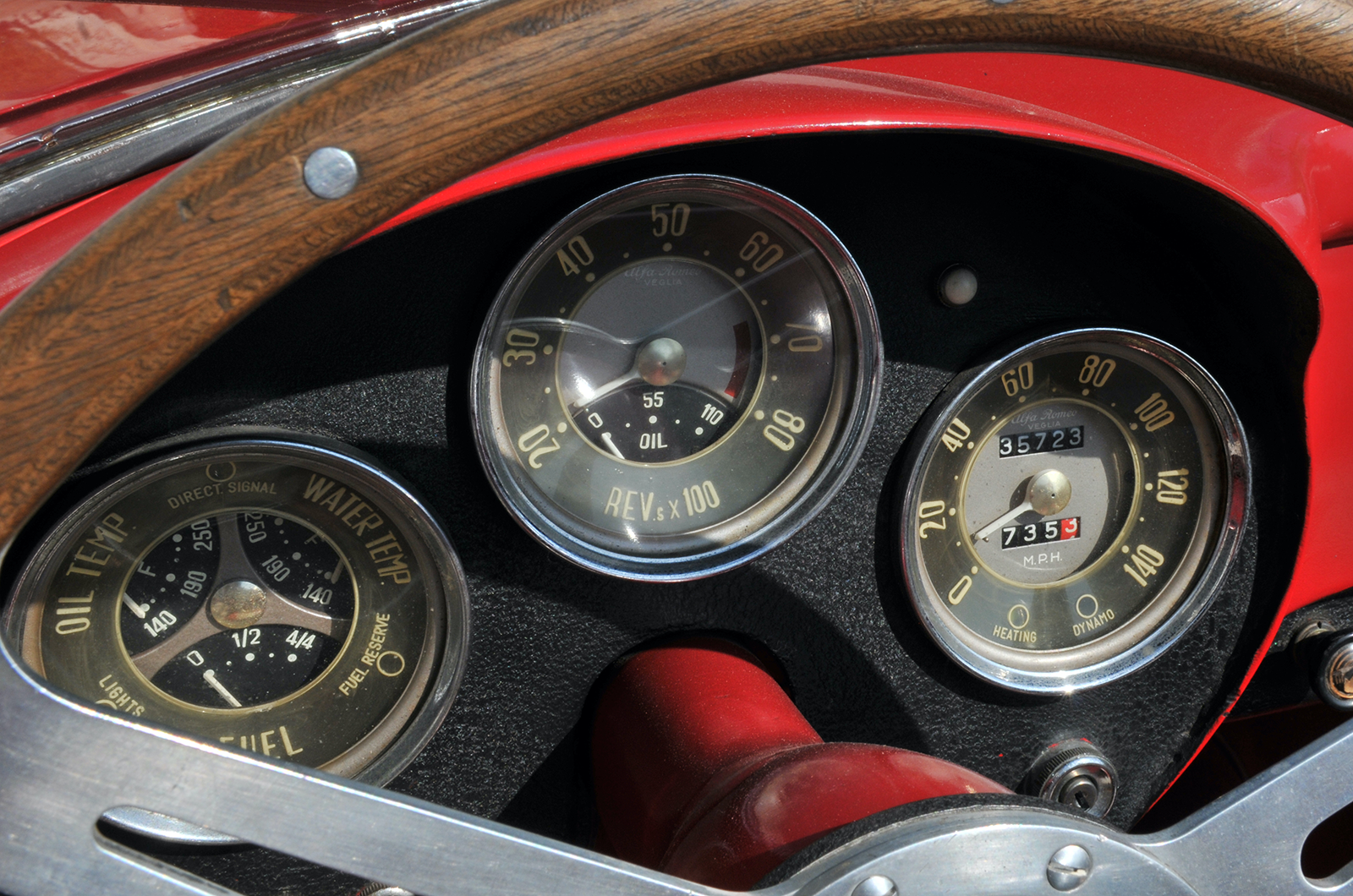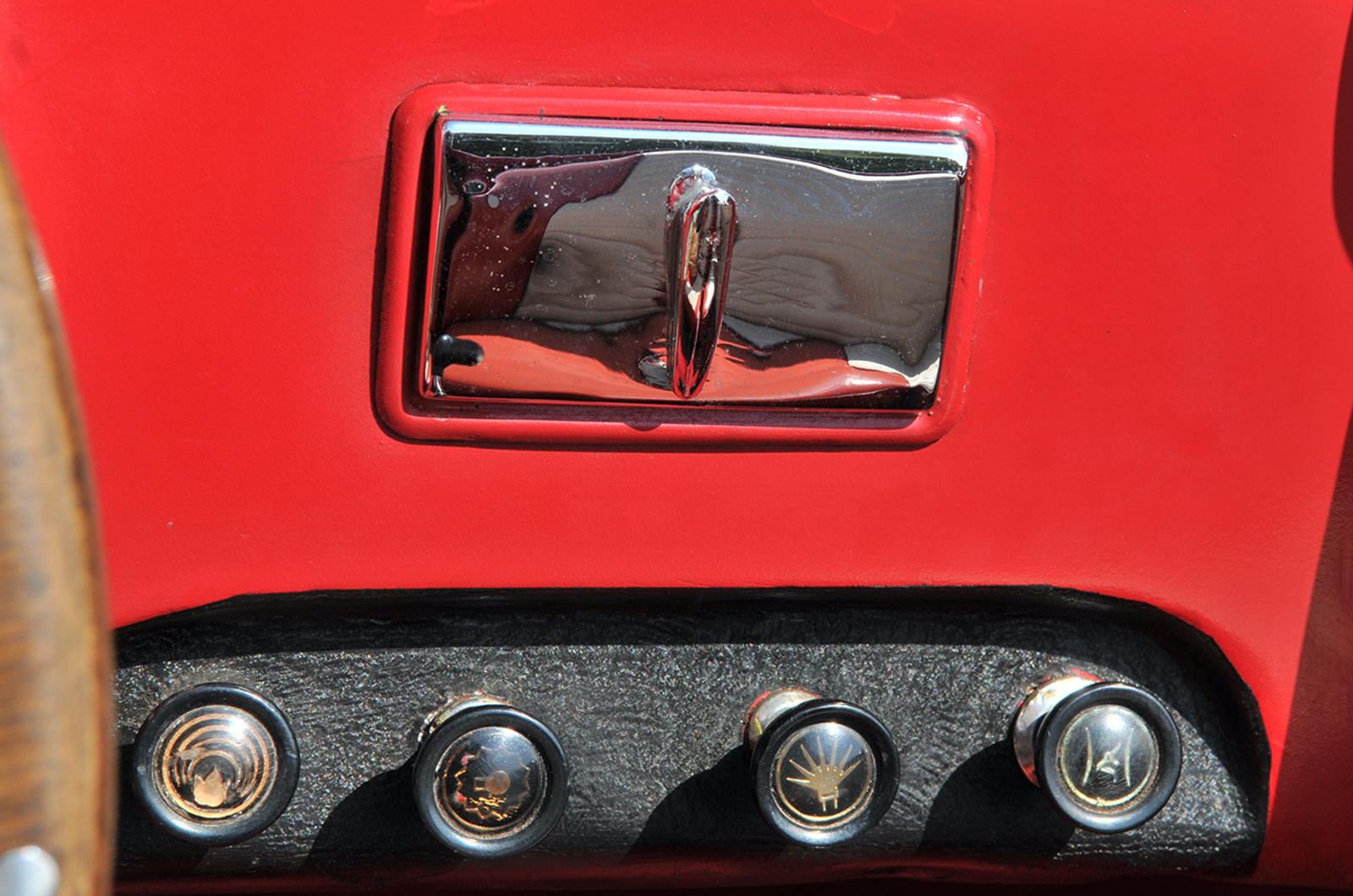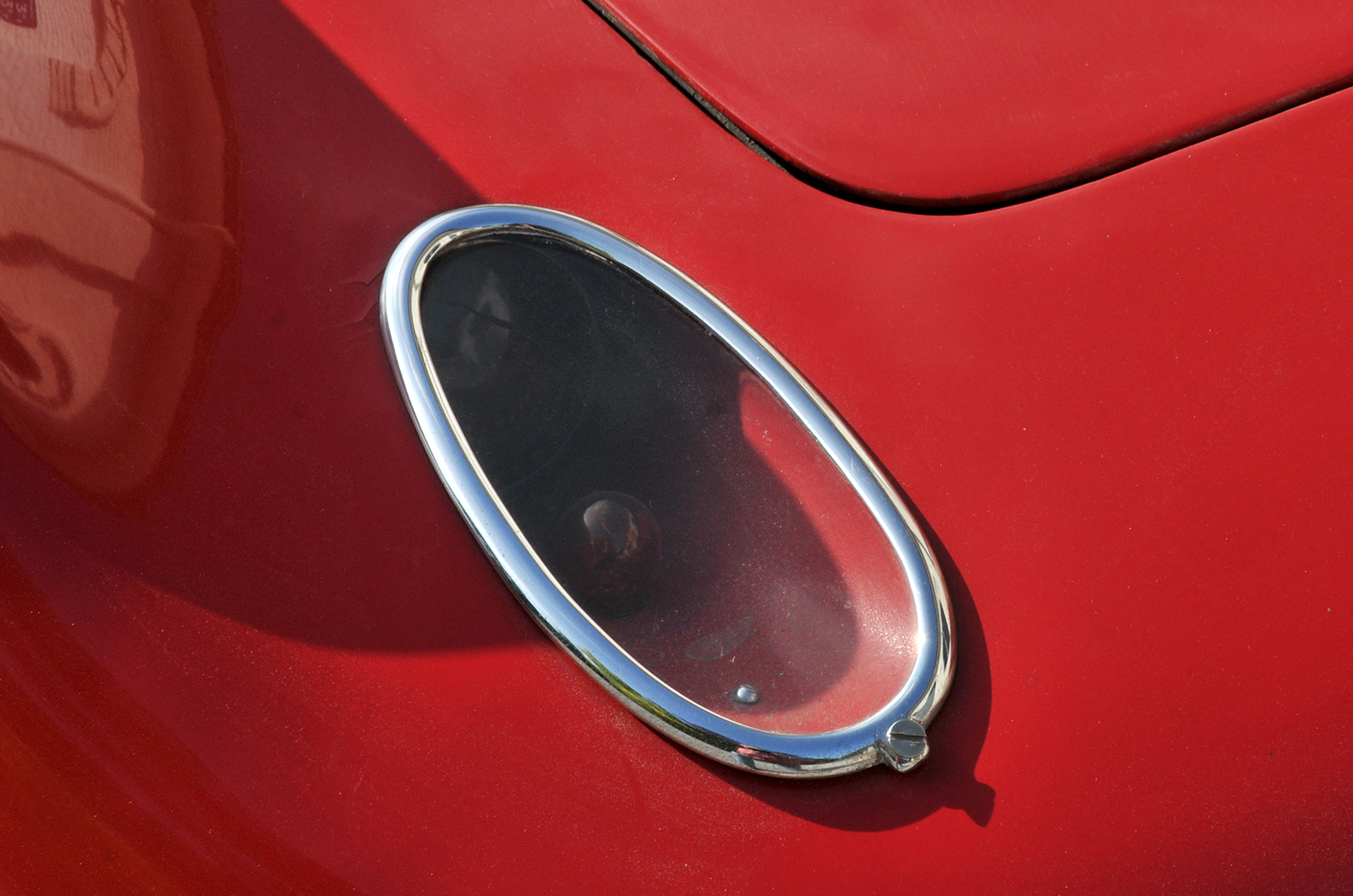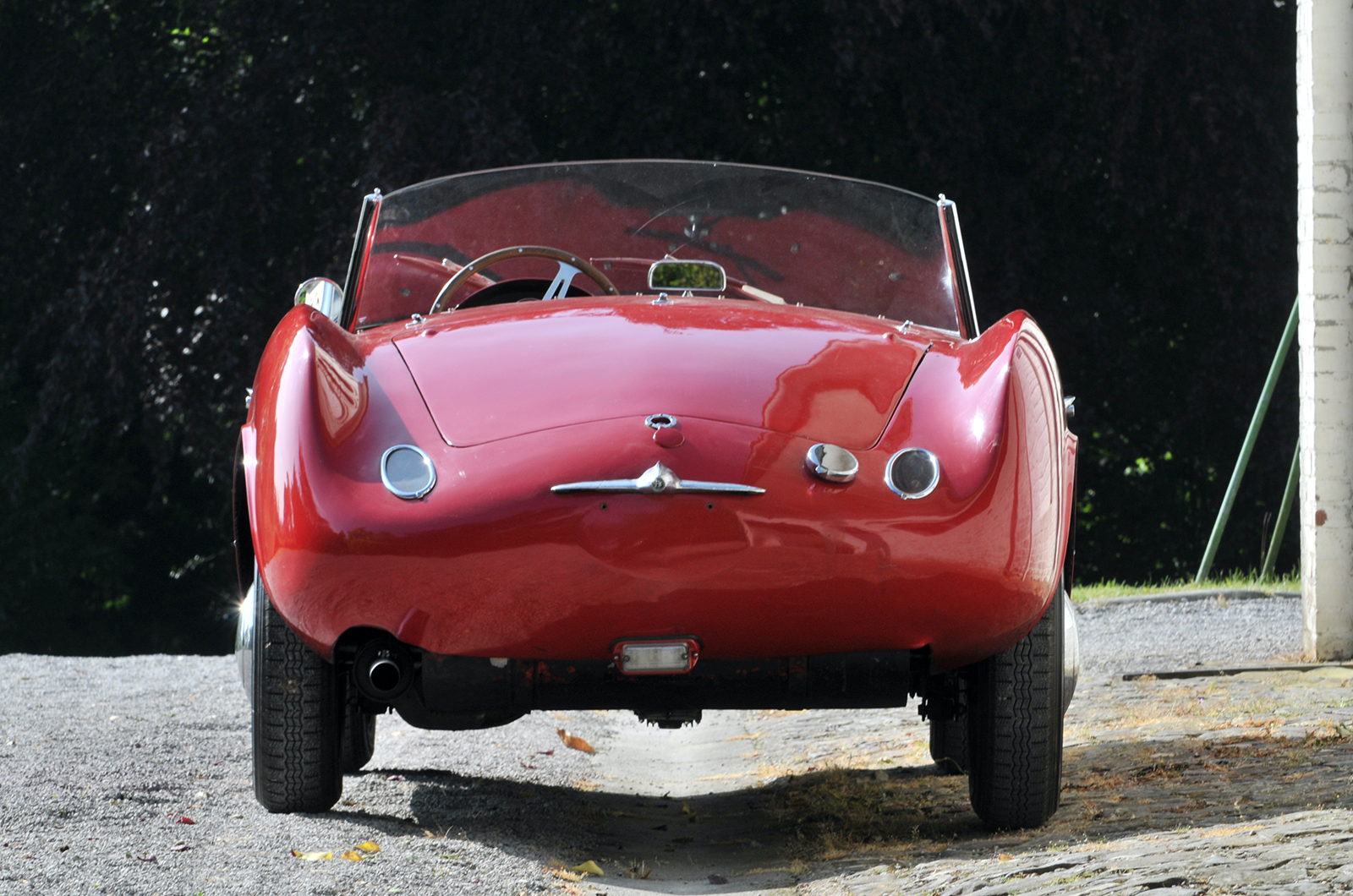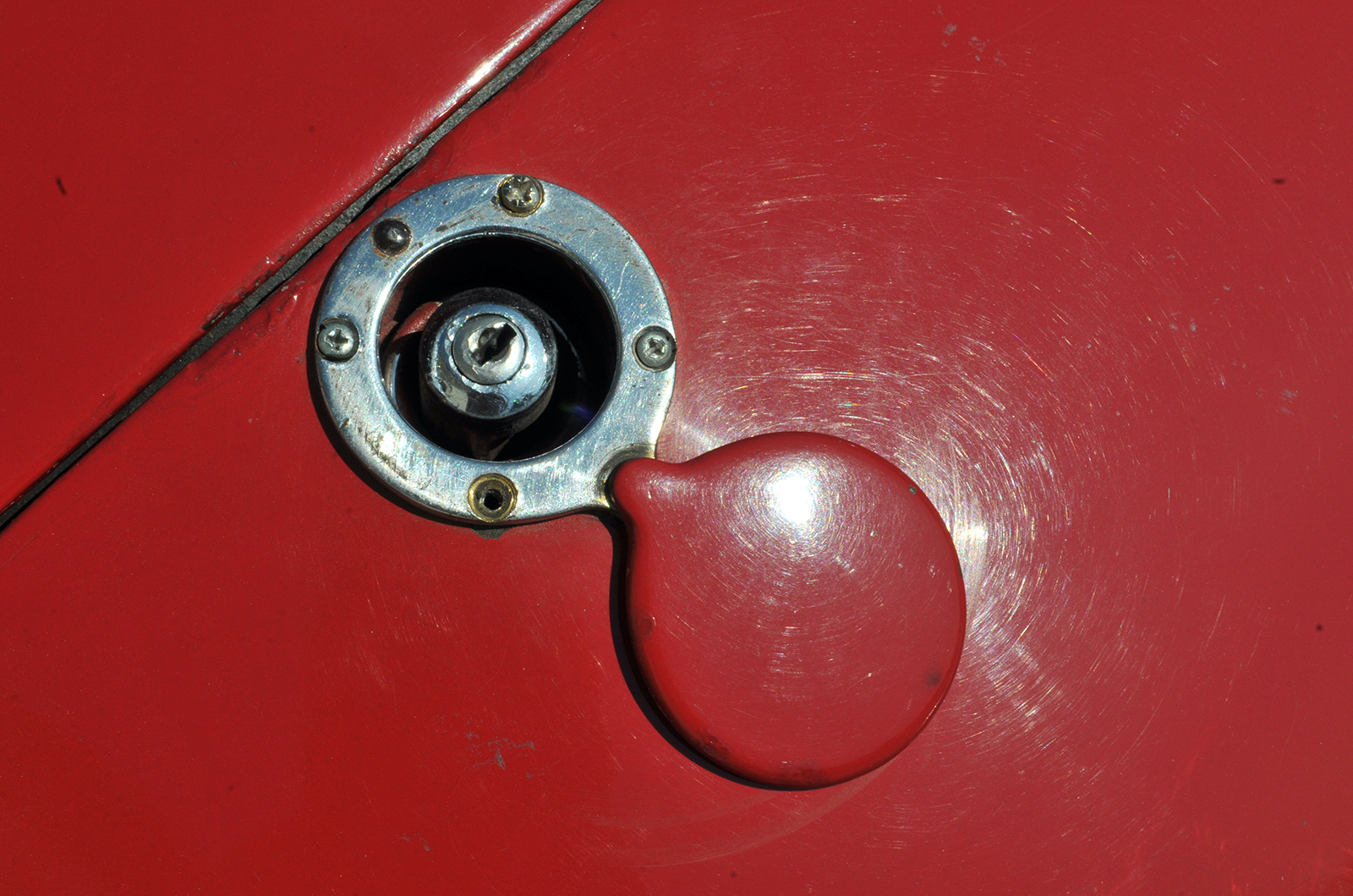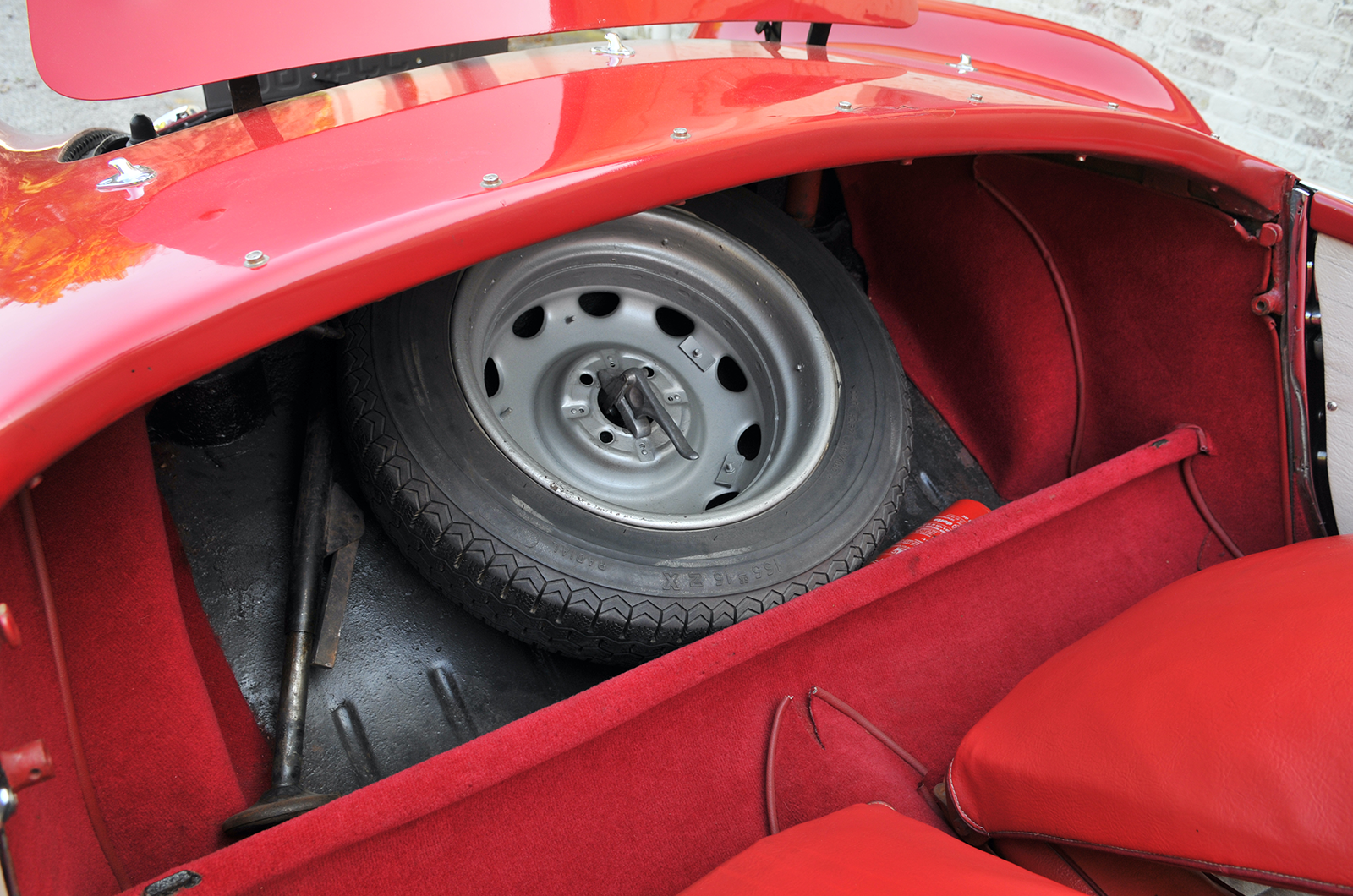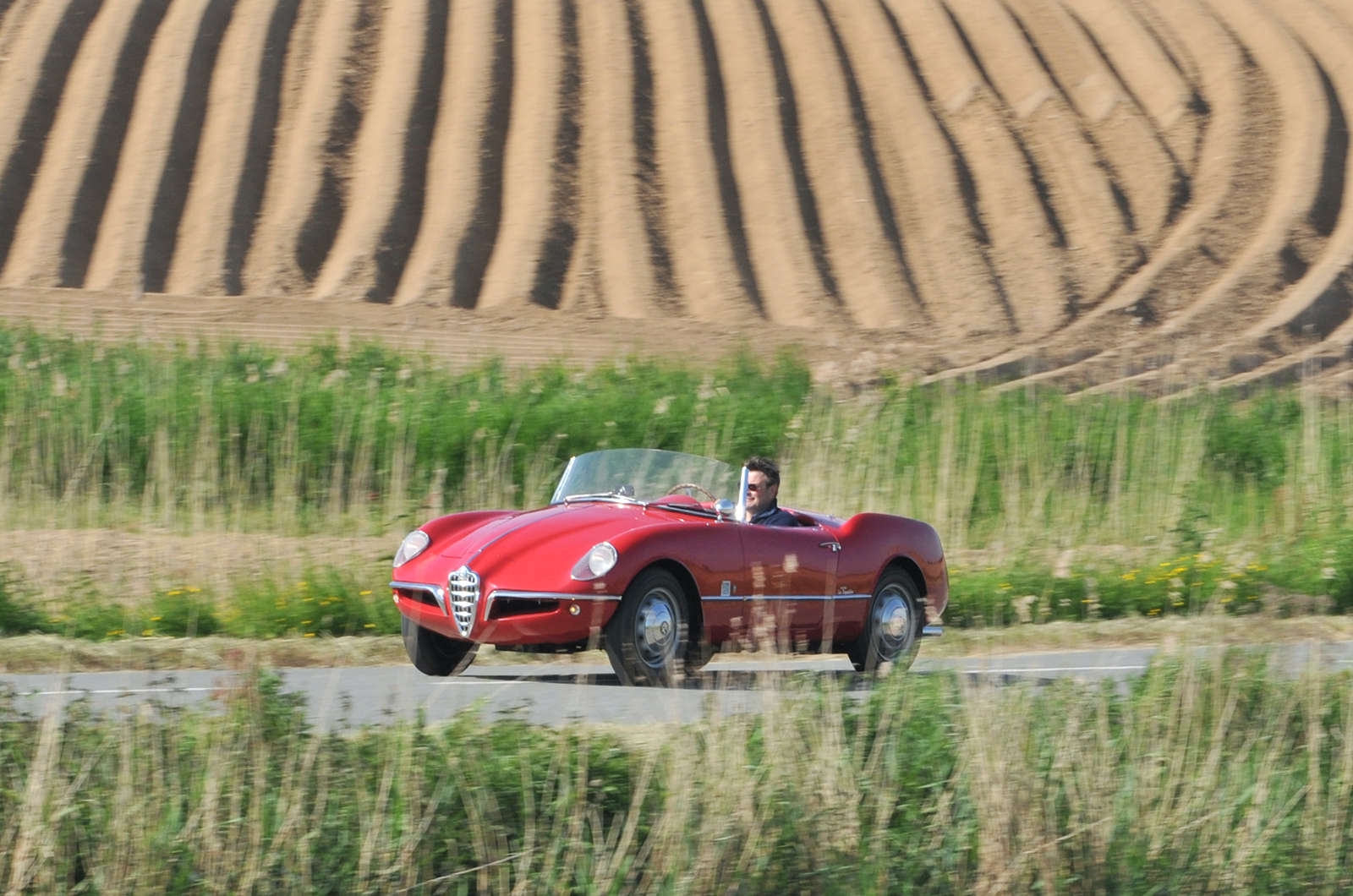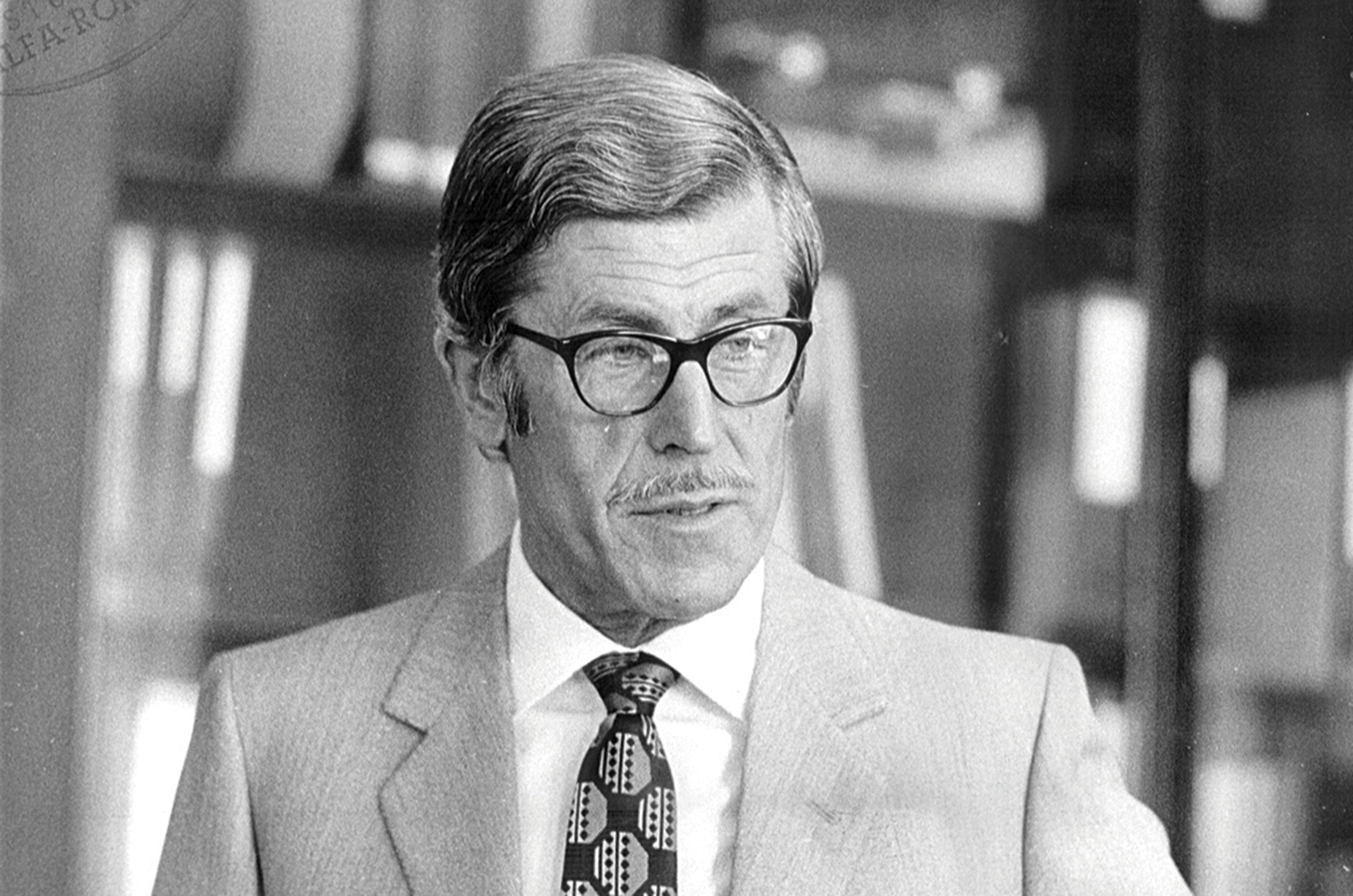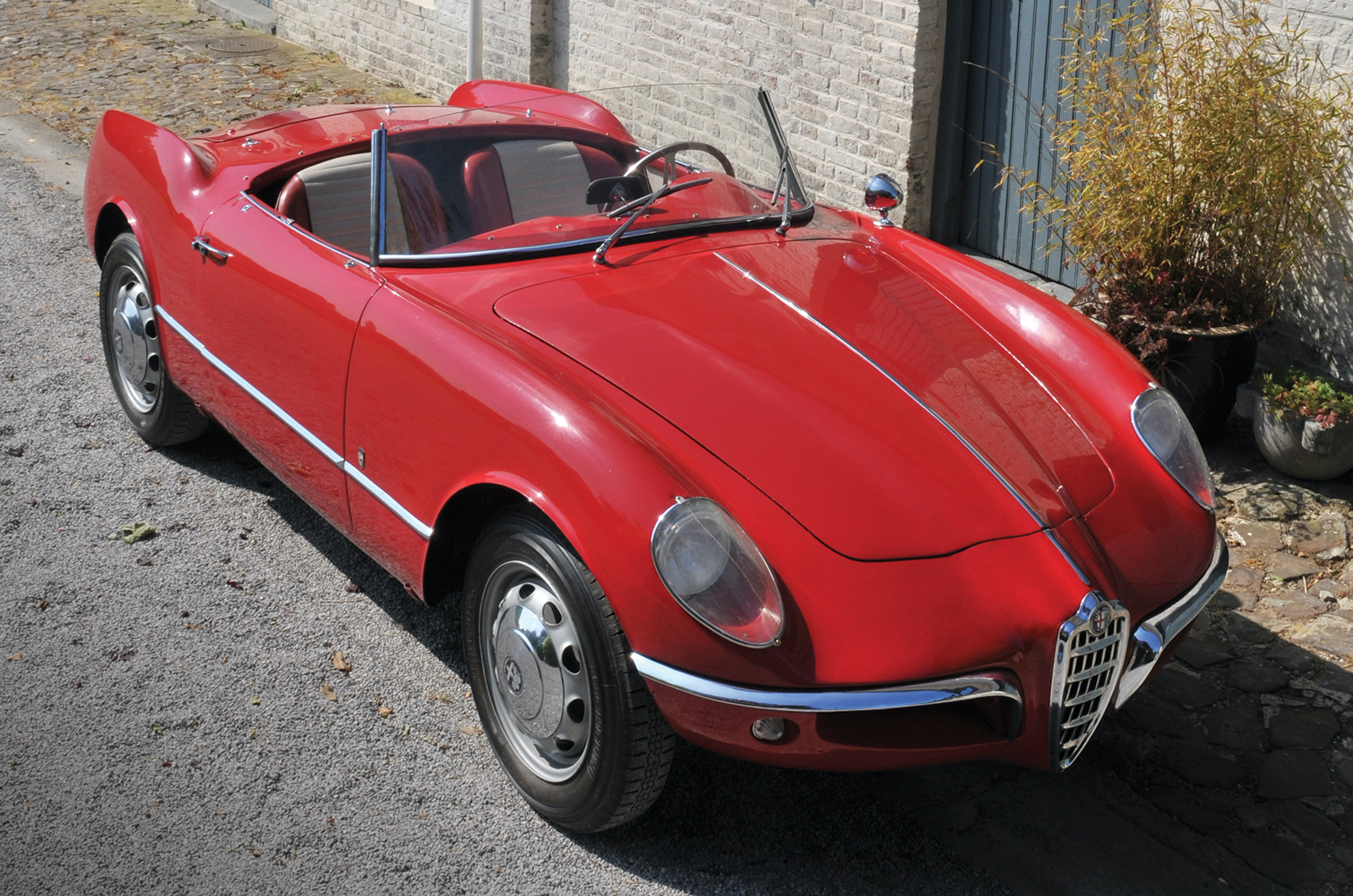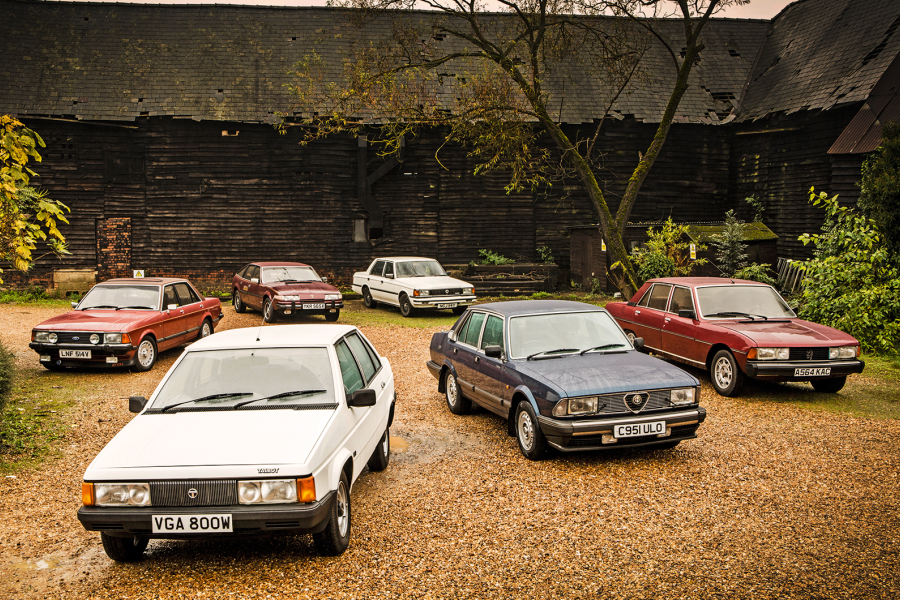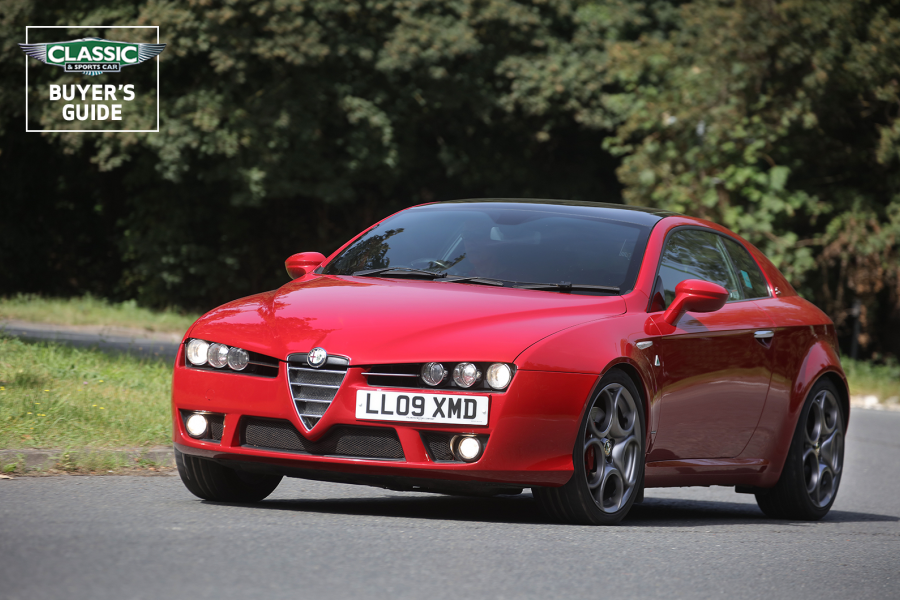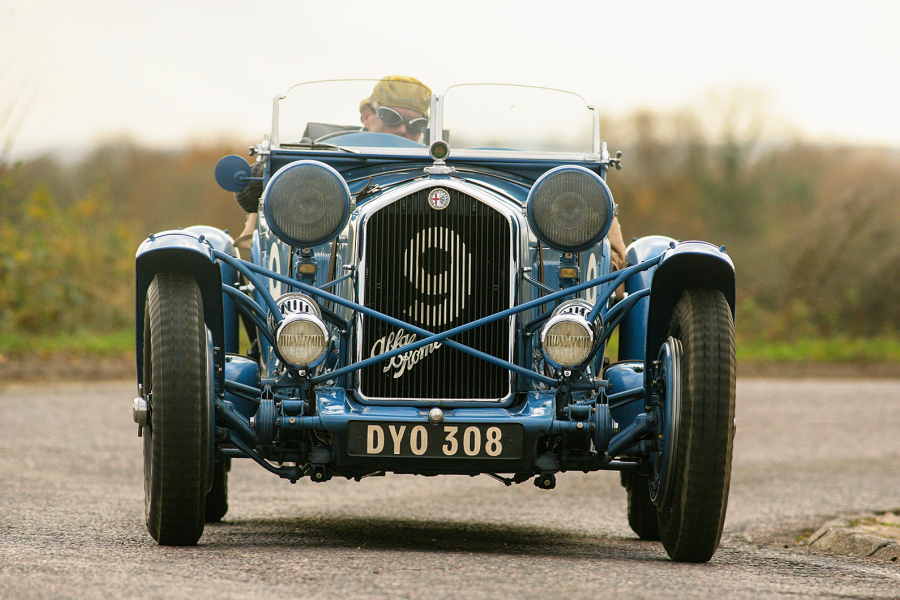In the centre of the dash, simple buttons control the lighting and accessories, and the gearlever – originally sited on the steering column – is now located on the floor in the traditional Alfa layout, a change likely carried out during the installation of the Spider Veloce powertrain.
The small ignition key brings the technically advanced 1290cc twin-cam ‘four’ to life, and it revs willingly, with a discreet but throaty growl.
From behind the wheel, the Bertone Spider feels much like a conventional Giulietta.
It is relatively lively (its all-aluminium body gives it a weight advantage), precise, rigid and, for a sports car, remarkably comfortable.
This Alfa Romeo Giulietta Spider’s agility and precision belie its prototype status
Not here do you endure the jolts of a British roadster and, remarkably for a completely handcrafted one-off, it feels just as accomplished as the series-production machine.
Intoxicated by the breeze caressing your hair, it is easy to imagine taking the road to Italy, crossing the Alpine passes before sliding on to the Piedmont plain and reaching the romantic lakes, where the Riva speedboats gleam as they cut through the turquoise waves.
You almost forget that you are behind the wheel of a prototype, the creation of which distilled the ideas of passionate designers through the efforts of talented coachbuilders.
Even today, the astonished looks of enthusiasts remind you of its exceptional character, which remains a milestone in the history of both Alfa Romeo and Bertone.
Words and images: Serge Cordey
Thanks to: Christophe Pund, La Galerie des Damiers
Alfa Romeo Giulietta: Rudolf Hruska and the Henry Ford link
Engineer Rudolf Hruska channelled his experience from Ford, Porsche and Volkswagen to ramp up Alfa Romeo Giulietta production
The Giulietta owes its design mainly to Orazio Satta and Giuseppe Busso, but the person responsible for its production was Rudolf Hruska, an Austrian engineer who had worked with Ferdinand Porsche.
In his book, The Alfa Romeo Tradition, Griffith Borgeson reports asking Hruska what experience he relied on to achieve a production of 250 Giuliettas per day.
“At Volkswagen, the target was 1000 units per day,” replied Hruska. “I took part in the planning of this huge operation.
“Ferdinand Porsche went to Dearborn to discuss the project with Henry Ford, asking if he had anyone qualified for these tasks and who would be interested in coming to Germany to create the new factory.”
Bertone’s Alfa Romeo Giulietta Spider prototype remains a tantalising ‘what if?’
“With the co-operation of Ford, a team of 30 came,” said Hruska. “I learned a lot.
“They had no time to waste on discussions: they were sure of what they were doing.
“The product would have been good, if the war hadn’t put a stop to it.”
It was this experience linked to Porsche and Ford that Hruska exploited for the Giulietta’s production – which, from the outset, went without a hitch.
The Austrian engineer is also known for the design of the Alfasud, but that’s another story…
Enjoy more of the world’s best classic car content every month when you subscribe to C&SC – get our latest deals here
READ MORE
An Alfa Romeo Giulietta Sprint like no other
Lancia Fulvia Sport vs Alfa Romeo Junior Zagato: premium blend
Praho: the unique Alfa Romeo you might never have heard of
